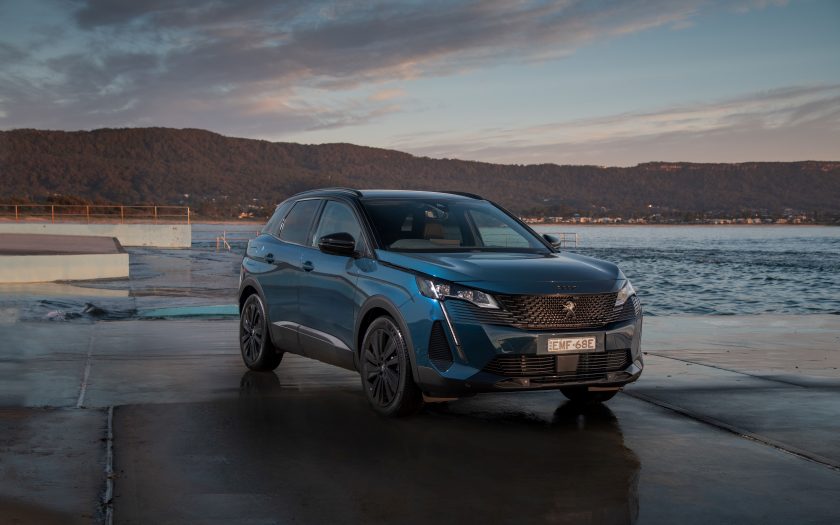Chris Riley tests the 2023 Peugeot 3008 GT Sport with pricing, specs, ride and handling, safety, verdict and everything the over-50 driver needs to know.
Summary: A few features have gone missing, but the Peugeot 3008 GT Sport delivers a fair helping of individuality, but you’ll pay for it.
2023 Peugeot 3008 GT Sport mid-sized SUV
Pricing: $63,431 (plus on road costs)
Options: metallic paint (any other than Celebes Blue) $690, premium paint $1050, sunroof $2500
Warranty: Five-years/unlimited km, five years roadside assist
Safety: 5-star ANCAP (tested 2016)
Build location: France
Engine: 1.6-litre turbo intercooled 4-cylinder petrol
Power: 133kW at 5500rpm
Torque: 250Nm at 1650rpm
Transmission: 8-speed sports automatic, front-wheel drive
Body: 4447mm (long); 1841mm (wide); 1624mm (high)
Weight: 1429kg
Towing capacity: 1750kg
Wheels: 19-inch alloy
Tyres: 205/55 R19
Ground clearance: 194mm
Fuel tank capacity: 53 litres
Official consumption: 5.6/100km (95 RON fuel)
Consumption on test: 6.9/100 (1000km)
seniordriver consumption on test: not tested
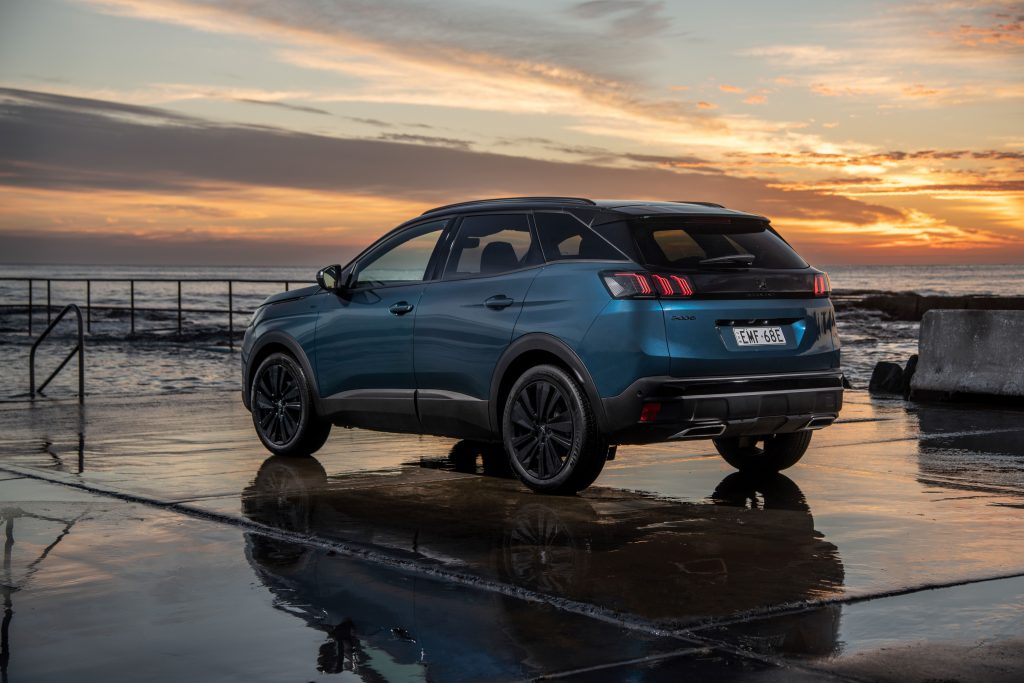
[review]
The French know a thing or two about style. Nowhere is this more evident than with the latest Peugeot 3008.
There’s no mistaking this car for anything else on the road, although one of the Chinese brands has imitated its distinctive cascading grille.
Facelifted in 2020 the five-seat 3008 is Peugeot’s biggest selling model in this country and a market leader in the European market.
So what makes this compact SUV so special?
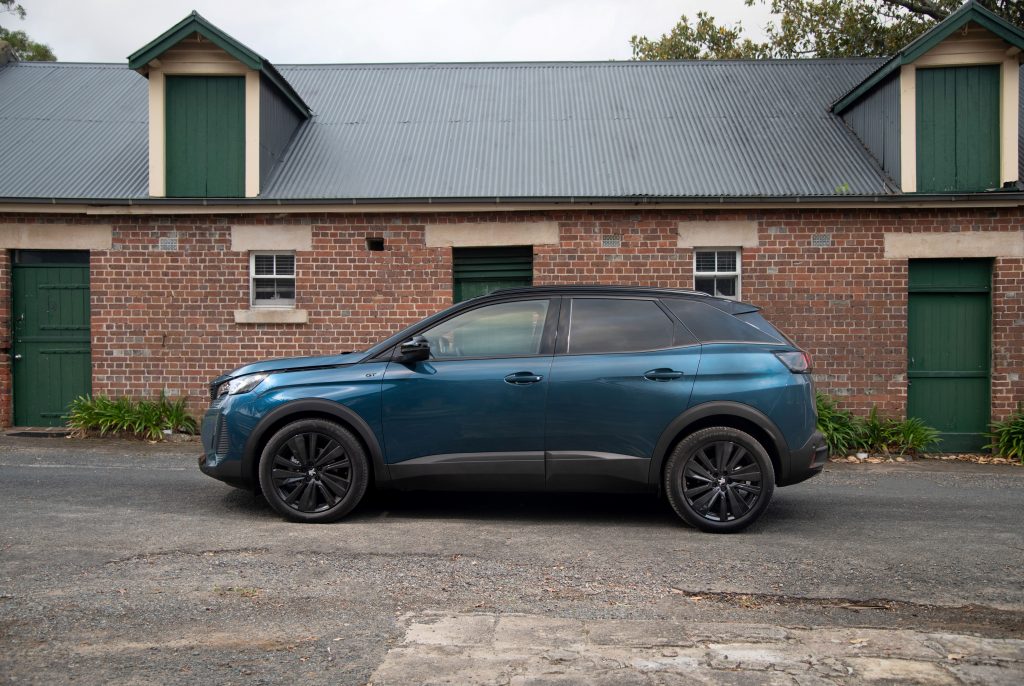
What’s it cost?
Three grades are offered: Allure, GT and GT Sport, along with a plug-in hybrid version of the Sport – GT Sport PHEV.
Petrol, diesel and petrol-electric hybrid powertrains are available, priced from $50,075 for the 1.6-litre Allure. Only the PHEV is all-wheel drive.
A sunroof adds $2500 to the price, while Celebes Blue (pictured) is the one, no-cost colour choice. Metallic paint is $690 more, while Premium paint adds $1050 – with a total of eight colours from which to choose.
Our test vehicle, the GT Sport, priced from $59,840 plus on roads, comes with the ‘Black Pack’ as standard which brings black trim and exclusive black 19-inch ‘Washington’ diamond-cut alloys with a unique ‘Black Mist’ finish.
This model also gets Nappa quilted leather upholstery, Lime Wood dash and door trim, two-zone climate air, with heated front seats and eight-way electronic adjustment and massage function for the driver plus a panoramic sunroof.
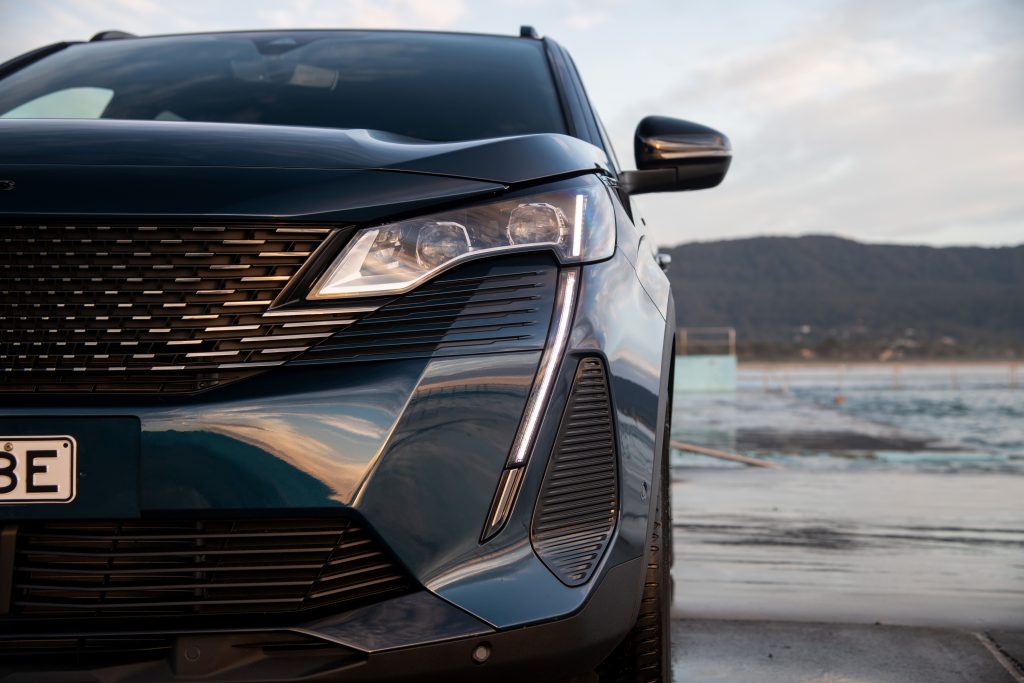
There’s also adaptive LED headlights, LED daytime running lights, digital instrument display, 360-degree camera, rear privacy glass, auto dipping mirrors, auto lights and wipers, front and rear parking sensors plus semi-autonomous parking assistance (parallel and 90-degree).
Infotainment comes in the form of a 10.0-inch touchscreen, Bluetooth, satellite navigation, voice control, AM/FM/DAB radio, with Apple CarPlay, Android Auto and Mirror Screen.
We can’t tell you what the actual audio system consists of, although we count seven speaker grilles (it’s not detailed in the specs).
Connectivity is supported by three 12-volt sockets (dashboard, rear cabin and load area) with 1 x USB socket in the front and another 2 x USB in the back for passengers.
The 3008 scores five stars for safety, with six airbags, autonomous emergency braking between 5km/h and 140km/h, with cyclist and pedestrian detection as well as forward collision warning.
Other safety features include adaptive cruise control with stop and go, lane positioning assist with road edge detection, blind spot detection, high beam assist along with speed limit recognition and recommendation.
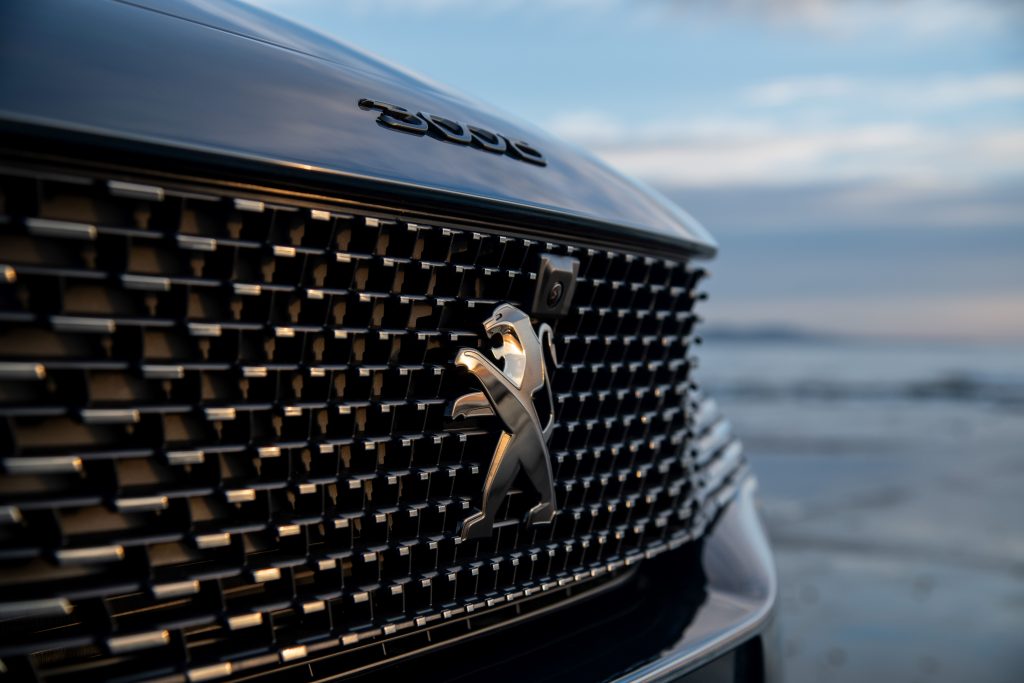
But take note the safety rating was due to expire at the end of 2022 and presumably the car needs to be tested again.
The automotive component shortage has not been kind to the 3008, with the removal of wireless charging, the power tailgate and Focus audio system.
The 3008 is covered by a 5-year unlimited kilometre warranty along with 5-year roadside assistance.
Service intervals are 12 months or 20,000km and add up to $2639 over five years, or an average of $528 per visit.
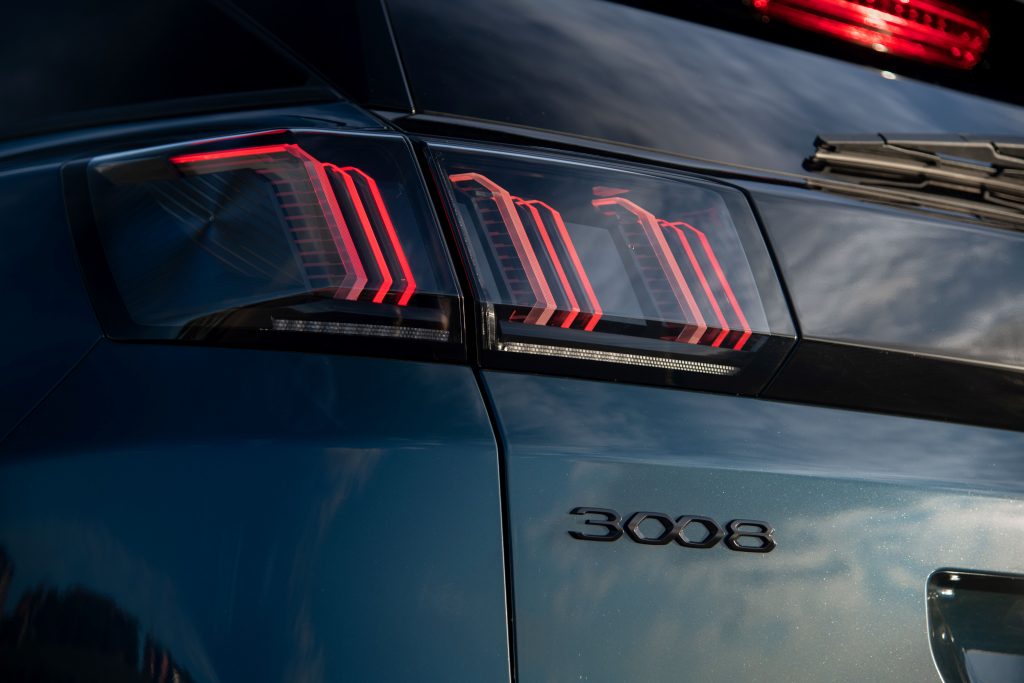
What’s it go like?
GT Sport is powered by a 1.6-litre turbocharged four-cylinder petrol engine.
It’s the same engine as in the GT but has been tuned to produce more power and torque, with 133kW of power at 5500 rpm and 250Nm of torque at 1650 rpm.
That’s still short of the diesel in terms of torque (130kW/400Nm) but less than the hybrid for both power and torque (147kW/300Nm).
Drive is to the front wheels through an eight-speed automatic transmission with paddle gear shifts and auto engine stop-start to reduce fuel consumption.
Three drive modes are available and activated by a toggle on the centre console: Normal, Sport and Eco. No need to explain what they do.
Top speed is 222km/h and it does the dash from 0 to 100km/h in a claimed 8.8 seconds. That’s not quick, but not too shabby either.
Fuel consumption from the 53-litre tank is a claimed 5.6L/100km and it takes 95 premium unleaded.
3008 is 4447mm long, with a wheelbase of 2675mm and is a cousin to the excellent Citroen C5 Aircross.
GT and GT Sport feature a different front grille with an elaborate light arrangement that incorporates Peugeot’s new ‘Fog Mode’ function.
In this mode with low-beam selected the LED headlights operate at reduced intensity whenever the rear fog lights are activated.
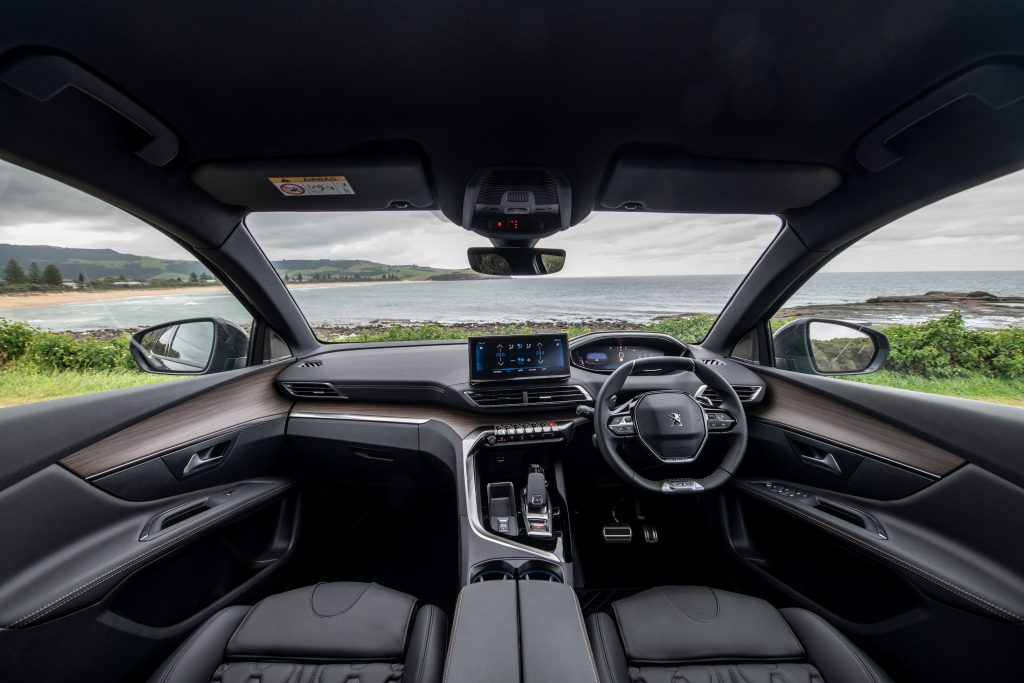
Inside the cabin has a premium upmarket feel and is designed around a tiny steering wheel and 12.3-inch fully digital instrument panel, the latter located high on the dashboard, avoiding the need for separate heads-up display.
If you like your wheel set high, as we do, the rim is apt to obscure the instrument panel which is a bit silly.
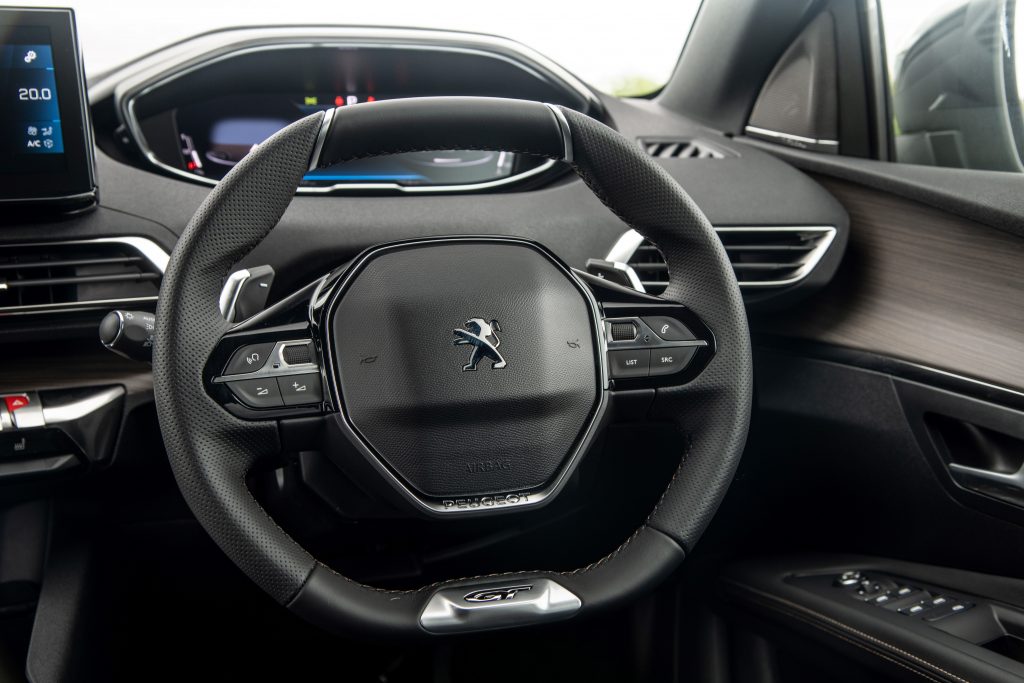
Being digital the dash can be configured to display a number of different configurations, from barebones with just a digital speedo to a more traditional style with an analogue tacho and speedometer.
It’s pretty cool, especially when the dials fold aside, not to mention the burnished copper colouring.
The touchscreen is a good size and comes with a row of shiny piano keys below it for quick access to the most-used functions.
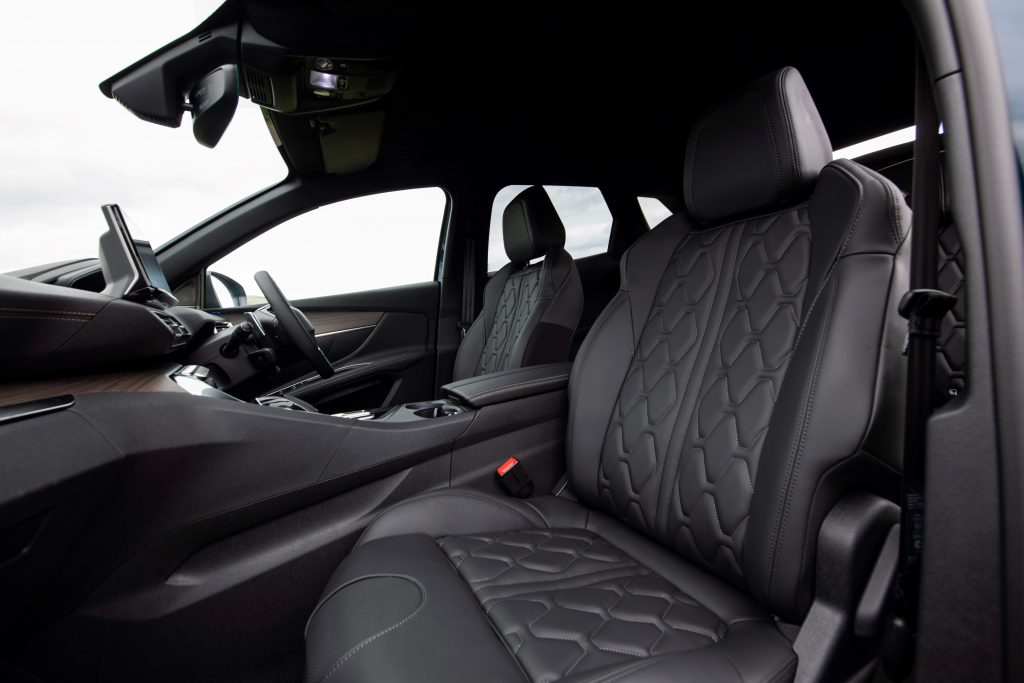
The driver’s seat is snug but comfortable, with power adjustment, memory for settings and a massage function.
Rear legroom is okay but not what we’d describe as generous, with rear air vents, 12 volt and 2 x USB ports, plus a fold-down centre armrest with two cupholders.
The cupholders are only large enough to accommodate a small coffee cup.
Finally, the boot is a good size, with 591 litres of space with the rear seat in use and hides a space saver spare.
With second row seats folded to transport stuff, the boot floor can be positioned higher to provide a level load area.
At 1429kg the 3008 is relatively light and it shows in the way the car steers and handles, as well as in the amount of fuel it uses.
Obviously, the heavier a vehicle is, the more effort it takes to move it.
Performance is fine with a driver and front passenger in place, but you need to work harder at it with four adults aboard.
Sport mode helps to compensate for the extra weight, but is too busy to use all the time. Eco is unnecessary.
As smooth as the Aisin tranny might be, there is some lag between pushing the accelerator and the car responding.
With four aboard the car sits noticeably lower at the back and looks a little meaner.
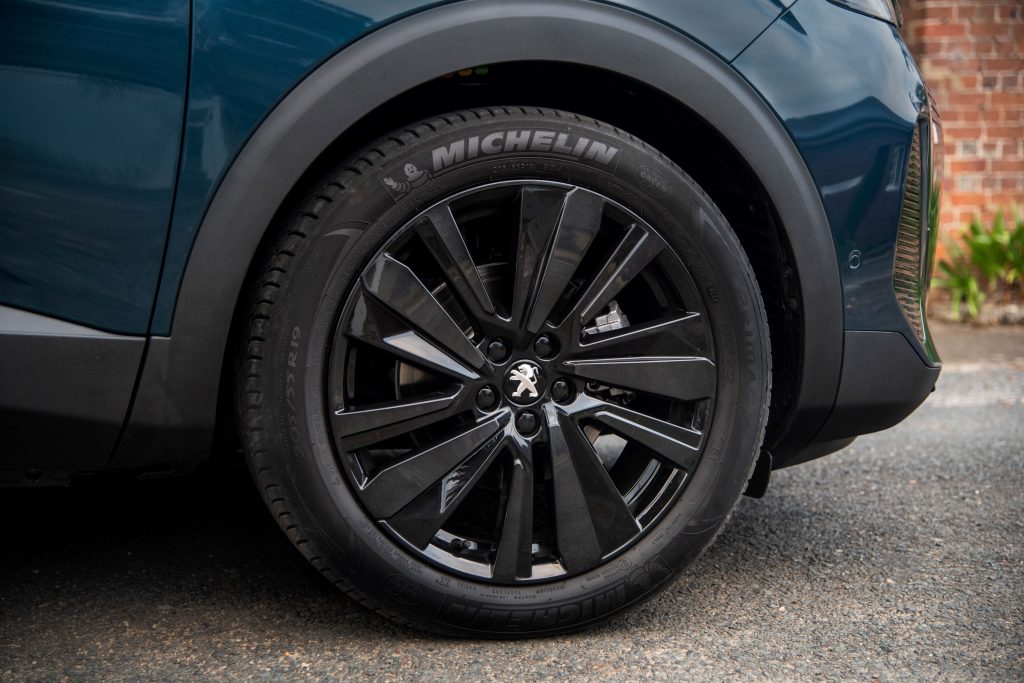
GT Sport rides on 19-inch alloys, with 205/55 series Michelin rubber.
Strangely, the less expensive GT with 18s gets wider 225s (hybrid with 19s gets 255s).
Ride quality is generally okay and the cabin is genuinely quiet, making for easy conversation even at motorway speeds – but background noise ramps up on coarse bitumen.
Little bumps and imperfections are too evident – too often – and could be easily ironed out with some local suspension tuning as demonstrated by other importers.
Steering and brakes are good, but the brakes can be touchy.
Auto parking is fitted and works with reverse and parallel parking, but doesn’t quite know what to make of 45-degree rear to kerb parking in many country towns.
No review of this car would be complete without mention of the Euro-style cruise control stalk.
We’ve said it before and we’ll say it again, it is unnecessarily complicated and has been for years.
In fact, it has been made even more complex by the need to factor in adaptive cruise and fine adjustment for the gap between you and the vehicle in front.
The last Citroen we drove, the C4 Shine, had seen the light so to speak, with the operation finally moved to the steering wheel like most other brands.
Why Peugeot persists is a mystery. It’s okay to be different, but not we suggest at the expense of practicality.
We were getting 6.9L/100km after more than 1000km.
What we like
- French heritage
- Looks the goods
- Designer leather trim
- Good fuel economy
- Rear air vents
What we don’t like
- Limited rear legroom
- Unnecessarily harsh ride
- That French cruise control stalk
What over-50 drivers need to know
If you’re in the market for a Euro SUV (read “not German”), the Peugeot 3008 GT Sport is an impressive alternative.
It looks amazing, it’s comfortable, goes pretty well, doesn’t use much fuel and is extremely quiet inside.
You can argue the GT Sport is expensive, or view it as a relatively cheap alternative for those wanting some Euro chic.
But for the price and its position as a premium offering in the market, it really needs the features that have been removed.
If you don’t need or want them, then that’s all right.
But top of the line is top of the line.
The unenviable challenge for Peugeot is getting buyers to accept a car with less equipment for the same price.
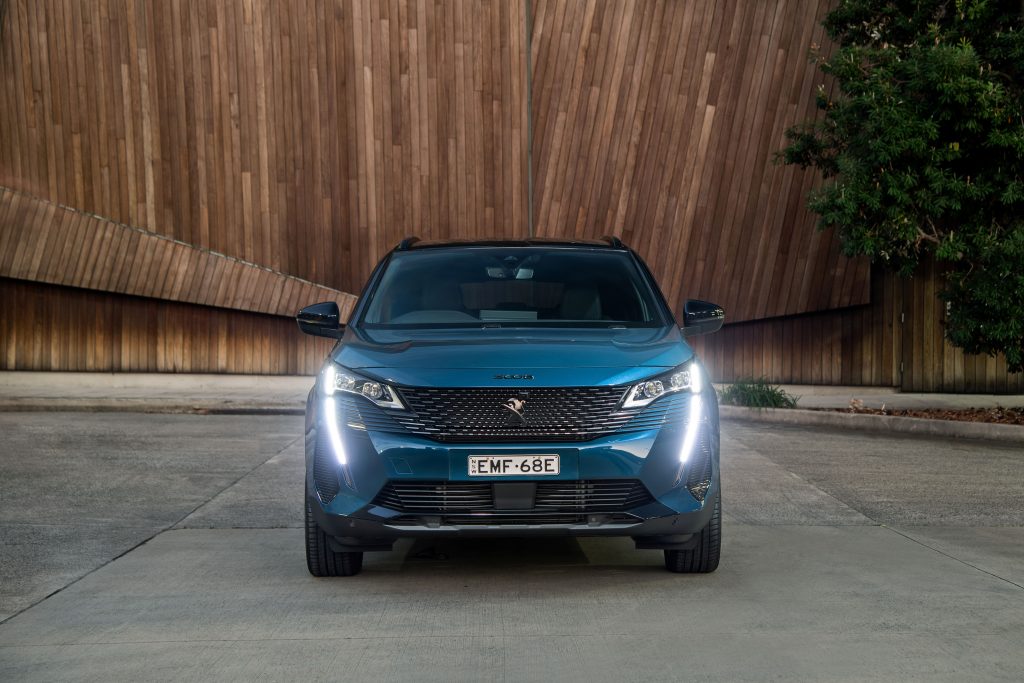
seniordriver comments
The Peugeot 3008 GT Sport is an attractive car, with plenty of European style, but the price is quite a shock. Seriously? Close to $70,000 (driveaway) when we used Peugeot’s price calculator. Although, as Chris points out, if you consider it as a high status European, it sounds more reasonable. The most obvious competitors for the Peugeot are the Alfa Romeo Stelvio (starts at $64,950), Audi’s Q5 (from $67,900) and the BMW X3 (from $81,700). Less obvious are the Cupra Formentor (from $54,990), Genesis GV70 (from $68,500), Renault Koleos (from $37,500), Volvo XC60 (from $72,990) or the VW Tiguan (from $42,490). There’s a lot of stiff competition in there for the 3008!
Safety for the 3008 will be an issue for some. In line with ANCAP’s new rules, the safety rating expires after five years, and the 3008 was tested way back in 2016, so it will be interesting to see if it still qualifies for the maximum five-star rating, or indeed, if it is retested.
Removing features that were previously standard is unfortunately unavoidable, thanks to the worldwide component t shortage, but at this price, buyers have a right to expect a full range of kit.
We’ve said before that we’re not a fan of the tiny steering wheel which when we place it at our preferred height obscures the instruments. To our mind, a head-up display is a simpler and more sensible solution.
